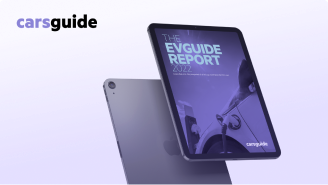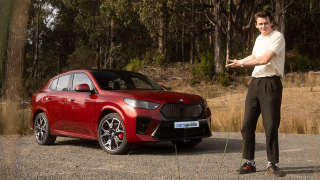
Hybrid vs plug-in hybrid: What's the difference?

The main difference when looking at a hybrid vs a plug in hybrid is that the former is powered by both a petrol-fuelled internal combustion engine and a battery-powered electric motor that can work either independently or simultaneously, whereas the latter is powered chiefly by an electric motor and will only use its internal-combustion engine as a back-up should your electric motor’s battery run out of juice.
SUV, BMW, AWD - if there’s one thing the automotive industry loves, it’s an acronym.
A new addition to the ranks is ‘PHEV’. If you’re scratching your head in dismay wondering “What is a PHEV?”, we can reveal the PHEV meaning, which is, quite simply, ‘Plug-in Hybrid Electric Vehicle.’
But what is a plug-in hybrid vs regular hybrid, and how do the two types of vehicle compare?
Put simply, plug-in hybrids are vehicles with both an electric motor powered by a rechargeable lithium-ion battery and a petrol-powered internal-combustion engine, but it will only use the latter as a back-up plan should the electric motor run out of charge, which will come as a comfort to drivers who have range anxiety. To recharge the electric part of the system - the battery - you simply plug the PHEV into a charger (or into the powerpoint in your garage if you don’t have a specific charging wall box installed at home).
What is a hybrid?


Download the EVGuide Report, 2022
Australia's one-stop snapshot of all things relating to electric cars.

A regular hybrid (which most commonly refers to a parallel or "self-charging" hybrid in Toyota vernacular) is much the same as a PHEV, except that the electric motor and internal-combustion engine work either independently or concurrently to power the car, although a hybrid cannot be plugged into a recharging station to power up the car’s battery.
Instead, the electricity in a hybrid car can be created via either acceleration while driving, engine idling, or a process called 'regenerative braking.' This is when kinetic energy that’s created when a vehicle slows down is converted into electricity by the electric motor which then gets stored in a small battery, thus essentially recharging your hybrid while you drive. Clever.
The upside of this technology is lower fuel consumption, less wear on the engine and brakes, and also that the technology is much lighter and comparitively inexpensive when lined up against a plug-in hybrid or fully electric vehicle.
The downside is that the range that this kind of a hybrid can travel in all-electric mode is usually quite limited - often as little as a few kilometres - and it can only go all-electric at limited speeds of up to about 30km/h. Plus, regular hybrids will always carry some kind of emissions burden as the engine will turn on every trip.
However, a hybrid does reduce fuel-consumption costs and carbon dioxide (CO2) emissions that contribute to air pollution by switching between using the electric motor and the combustion engine depending on the driving conditions, your speed and whether or not the car is stationary.
Drivers won’t notice much difference as the hybrid toggles between the electric motor and internal-combustion engine - something that can be monitored on the vehicle’s multimedia screen or digital dash elements - save for the car occasionally running silently when in electric mode.
Hybrids also have the advantage of being on the market for 20 years now, the original Toyota Prius having launched in Australia in 2001. This means the technology that hybrids use has been refined over time, leading to smaller and more efficient batteries, impressive reliability records, and greater power output.
Another clear benefit drivers will find from owning a hybrid is the lack of need to charge the vehicle externally, which can take hours in the case of a plug-in or a fully electric vehicle.
What is a plug-in hybrid?

Plug-in hybrids, which have been available in Australia since 2011, are a good option for those who travel relatively short distances to work, due to the fact they can travel between 40 and 100km on electricity alone depending on the model, without having to use the petrol engine.
The PHEV can then be charged via a wall socket or charging station during the work day, giving drivers the environmentally and wallet friendly ability to make their daily work commute a petrol- and emissions-free experience.
Functionally, PHEVs work in the same way as regular hybrid models, usually with more powerful electric motors to facilitate fully electric driving above 30km/h and larger batteries, which in turn increase the weight and cost of the vehicle.
Charging points can also be installed in people’s homes by a specialist technician, cutting down on the time taken to charge compared to a standard wall socket and eliminating the need to hunt down a public charging station.
The battery size of the PHEV determines its range and how long it takes to charge, as does the model of the vehicle and the actual charging outlet, making charging times vary greatly. A good rule of thumb is to expect a full charge to take somewhere in the vicinity of two to six hours in total. Some PHEVs have the additional benefit of vehicle-to-load systems (V2L) which allow you to dispense power to external devices from the car's battery via the charging port.
Some drivers will also like the fact they can drive all-electric in a PHEV, but they should be aware a full charge is unlikely to get them through a work week and the vehicle will require regular charging.
All-electric driving will of course also cut down on fuel costs, so long as you keep the car’s battery charged. If leaning on the internal-combustion engine as the main source of power becomes the norm, expect greater petrol costs compared to a standard hybrid, as you'll be carrying around the significant heft of large batteries in a PHEV.
Which is more popular, and which should I buy?
Put simply - you need to buy the vehicle which best suits your needs. You need to understand the reality of needing to charge a PHEV constantly to get any benefit out of it - otherwise you're dragging around a lot of extra hadrware with a combustion engine, which will result in higher, not lower, fuel consumption figures.
A PHEV will be most likely to work for you if you have access to a power outlet in your garage, and the available range on offer in the car you choose is more than your daily commute. Otherwise, a regular self-charging hybrid is a great way to cut your fuel bill in half at a lower up-front cost and without the hassle of charging.
Hybrids are becoming increasingly popular in Australia due to their combination of power, price and positive environmental impact. Hybrid sales in Australia overall saw a huge leap in 2022, recording a sizeable 21.0 per cent increase from 70,466 vehicles in 2021 to 81,786 vehicles sold by the end of 2022.
Several car manufacturers, like Toyota, Kia, Hyundai and Subaru, offer hybrid versions of their petrol-powered models, and the price difference between the two is usually comparatively small.
Read More: 10 best hybrid vehicles in Australia
The Toyota RAV4, Australia’s most popular SUV, saw its hybrid model top Australia’s car sales for the first time ever in August 2020.
PHEVs are generally more expensive and misunderstood by consumers, but are now seeing a significant increase in sales (although not as significant as fully electric cars), rising from from 3372 vehicles sold in 2021 to 5937 vehicles in 2022 - an increase of 76.1 per cent.
This is off the back of popular new plug-in hybrid models in the mainstream mid-size SUV space which don't have outrageous price-tags, like the affordable MG HS +EV and Mitsubishi Outlander PHEV. It's worth considering that some PHEV models would have been more popular in 2022, had they not been hit by supply constraints, like the Lexus NX 450h+ and Kia Sorento PHEV.
Regardless of how the consumer feels in the plug in hybrid vs hybrid battle, both types of vehicle are going to cut down on fuel costs and carbon emissions, and both are a good stepping stone toward getting a fully electric vehicle (EV), which is where the global automobile market is seemingly eventually headed. In fact, the EV success story is more on-track in Australia generally, as of mid-2023 making up some 7.4 per cent of the market. Over the course of 2022, the











Comments